Highlights:
- One of the best hotspots in South Texas
- Great mix of shrubby woodland, open old growth woodland, small lakes, and open grassland
- Canopy Bridge and Hawkwatch Tower
- Multiple bird blinds and feeding stations
Entrance Fee: $5 per person – cash or check only. Debit and credit cards not accepted.

The Location
Santa Ana, sometimes called the crown jewel of the national wildlife refuge system, is arguably the best place in South Texas to spend half a day as a birder.
Whether you’re birding by foot or by bicycle, the refuge is too big to fully cover in a single day. You definitely won’t run out of thing to do and birds to see!
The best months to visit are October through April. All other months are usually sweltering hot, making it difficult to stay outside later than 9am.
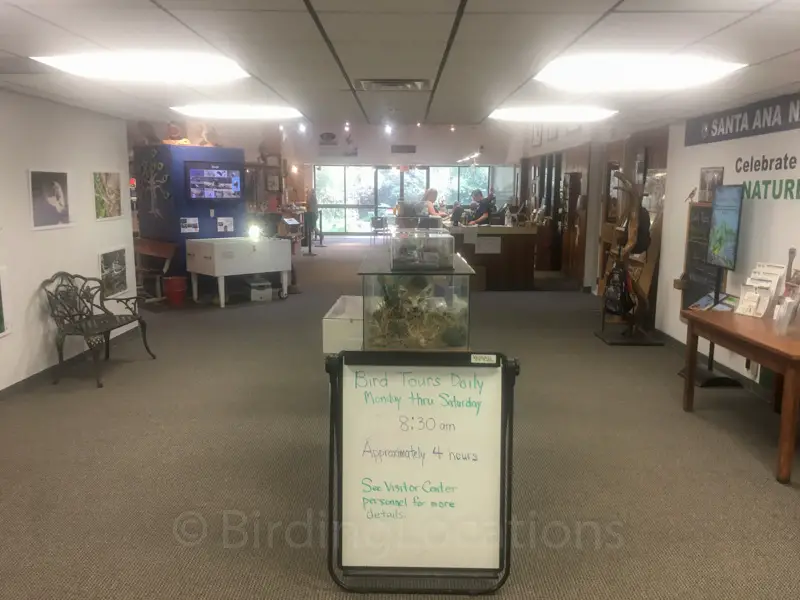
This refuge has a great visitor center. Plenty of educational displays, a sizable gift shop, a bird feeding station viewable through a glass wall, and more feeding stations just outside the building. The staff here are generally very friendly and helpful.

Most birders spend their time on the refuge at the front (north) area, closer to the visitor center and lakes. This works out great because this area has good habitat diversity, from wetlands to dense woodland, gets you access to the three story hawkwatch tower, and doesn’t require a killer amount of walking.
South Texas summer heat is brutal, but winter days “only” hit a high of 70 to 80 degrees. This makes for great birding weather, and is therefore the busy season on the refuge.
Free guided bird walks take place during winter months (December – March). This is also when rarities tend to show up, like Northern Jacana or Crimson-collared Grosbeak.
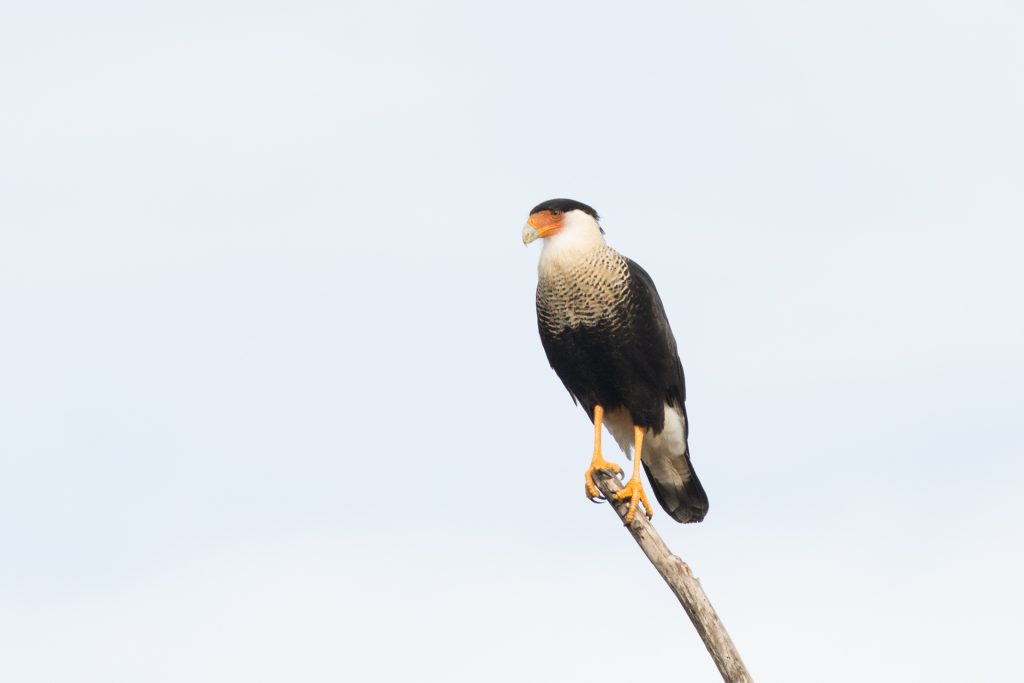
Regularly seen species on the refuge include:
- Cinnamon Teal
- Mottled Duck
- Plain Chachalaca
- Least Grebe
- Anhinga
- White-tipped Dove
- Common Pauraque
- Harris’s Hawk
- Gray Hawk
- White-tailed Hawk
- Buff-bellied Hummingbird
- White-tailed Kite
- Ringed Kingfisher
- Green Kingfisher
- Crested Caracara
- Golden-fronted Woodpecker
- Vermillion Flycatcher
- Great Kiskadee
- Tropical Kingbird
- Green Jay
- Black-crested Titmouse
- Long-billed Thrasher
- Clay-colored Thrush
- Olive Sparrow
This is also likely the best place in Texas to try for Hook-billed Kite. They are never guaranteed and always require luck, but are seen semi-regularly during winter months. Sometimes birders see them from atop the hawkwatch tower, other times they are seen in the vicinity of Pintail Lakes.
Birding Recommendations
Here are two simple but great ways to have a memorable experience at Santa Ana:
- Attend the free guided bird walk
- Bird on your own by visiting the three recommended areas
-Hawkwatch Tower
-Willow Lakes Trail
-Pintail Lakes
Guided Bird Walks
Guided bird walks at Santa Ana are free with admission and occur daily at 8:30am (except Sundays). They are offered from December through March and start at the visitor center. Expect to see 50 – 65 species over 3 hours.
The bird walk leader is always a volunteer who is not only very knowledgeable and enthusiastic about birds, but knows the refuge well and where interesting species have recently been seen. They will often point out sleeping Common Pauraques in their favorite daytime hiding spots, or an owl roosting in its favorite tree.
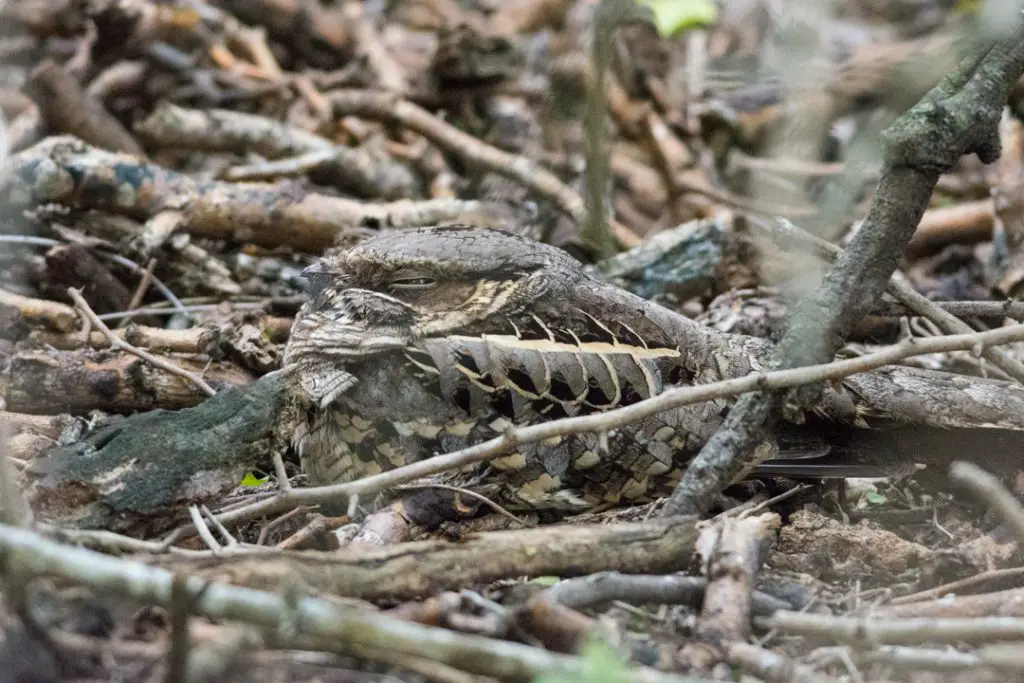
The bird walks visit both the hawkwatch tower and Pintail Lakes, and sometimes other spots close to the visitor center.
If you’re not targeting any one or two specific species, the bird walk is a fantastic way to experience the refuge. You will certainly see a few species that you would otherwise miss on your own, and you’ll be in the company of people who love birds just as much as you do!
Birding on Your Own: Three Recommended Areas
Some birders prefer to go solo, or just avoid bigger groups, and that’s ok. If that’s you, here are three areas you should explore:
- Hawkwatch Tower
- Willow Lakes Trail
- Pintail Lakes
Birding these three areas will take about 3 hours over approximately 3.5 miles. This allows for a fairly leisurely pace so you won’t feel rushed.

The Hawkwatch Tower & Canopy Bridge
The .5 mile walk to the tower will kick off your species list with birds that favor more dense, shrubby woodland. Watch and listen for Olive Sparrow down low, and warbler species up high like Black-and-White Warbler.

The Canopy Bridge and Hawkwatch/Observation Tower are right next to each other. The bridge is fun to walk, but the tower is more practical for birding. Feel free to spend as much time up here as you want.

Sometimes birders targeting Hook-billed Kite will stand here for hours, hoping to get a glimpse of one flying by in the distance.
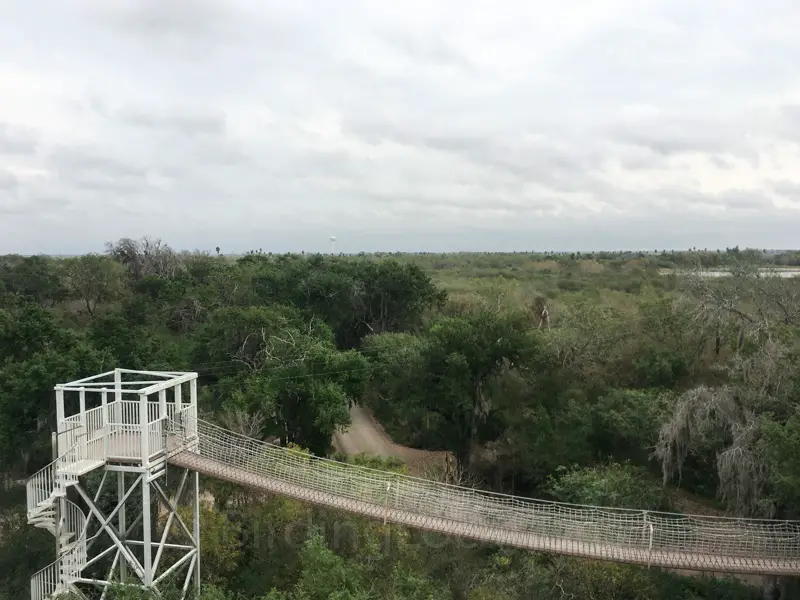
More common sightings include Harris’s Hawk, Osprey, Red-tailed and Red-shouldered Hawks, and other raptor species.
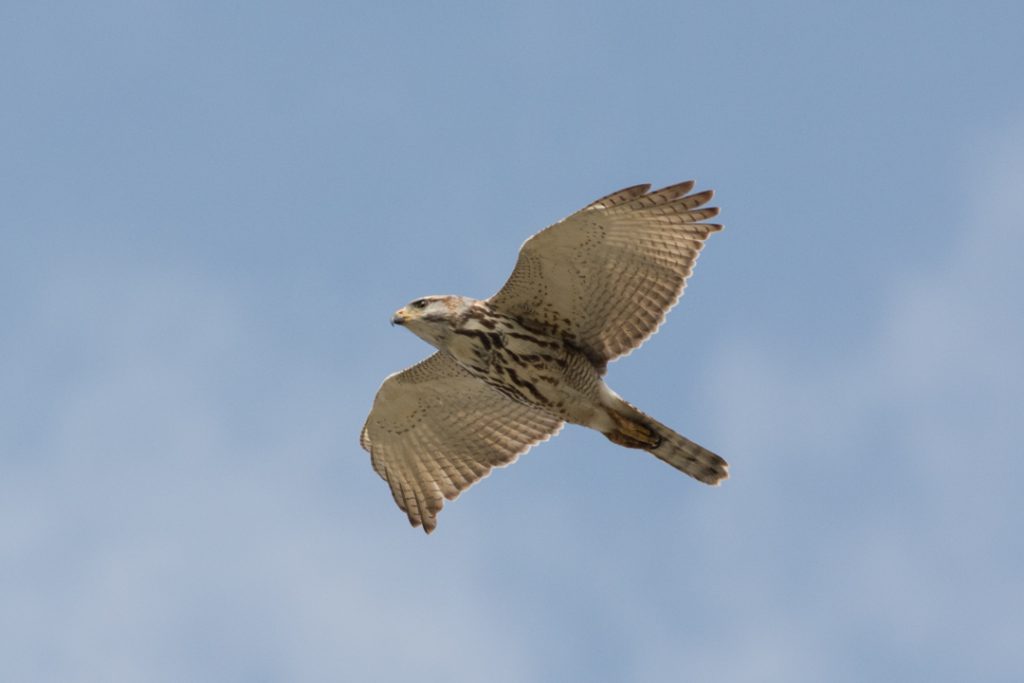
From here head to the Willow Lakes Trail since it’s close by.
Willow Lakes Trail
This trail gives you access to marshy wetlands within a more open old growth forest.
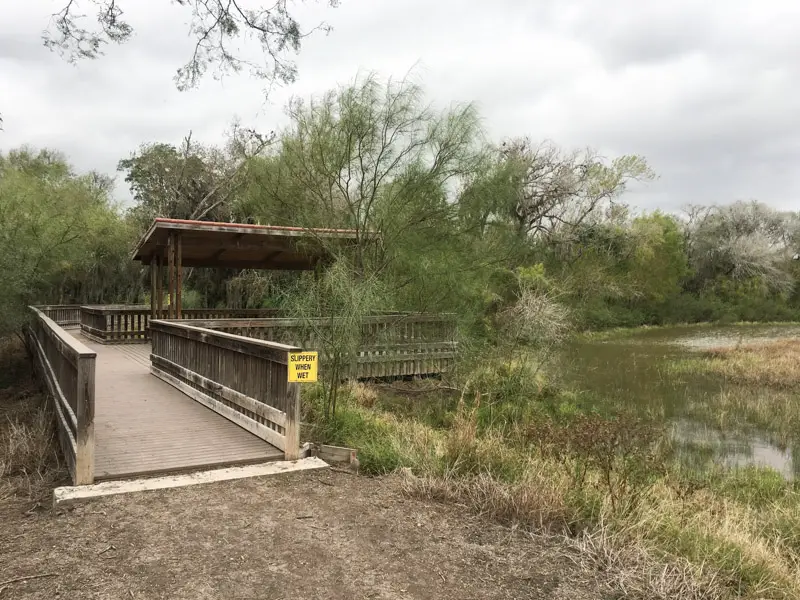
Expect decent views of Least Grebe and multiple duck species, sometimes including Cinnamon Teal. White Ibis and White-faced Ibis are posibble, along with Black-necked Stilt and American Avocet.

When walking the more wooded sections of trail be sure to keep your ears open. You’ll often hear birds before you see them here.
There’s plenty of blinds and veiwing overlooks as you circle your way around the water.
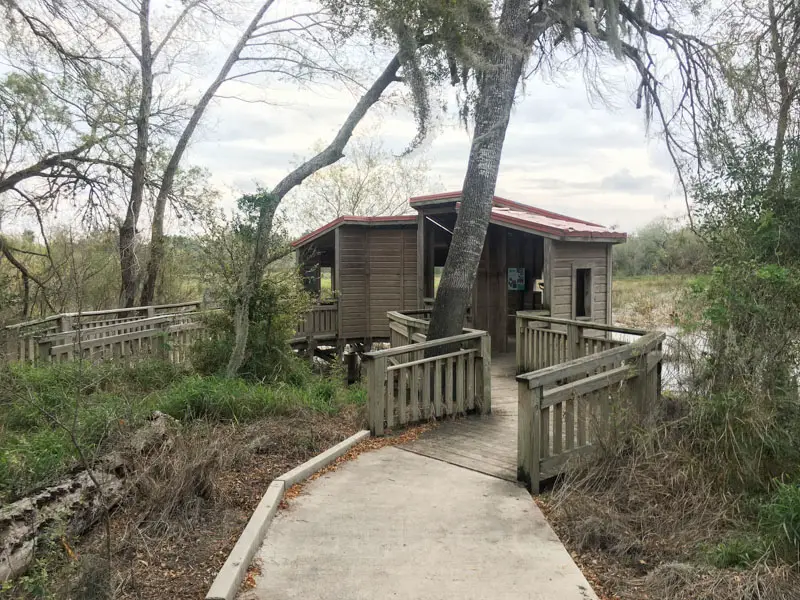
For those that enjoy butterflies, this forest trail can be a good spot. Zebra Longwing is common.
Pintail Lakes
Note that Pintail Lake Trail goes near Pintail Lakes, but it also loops to the south away from the lakes. The lakes are what you want, so just head straight there, regardless of which path or trail you take.
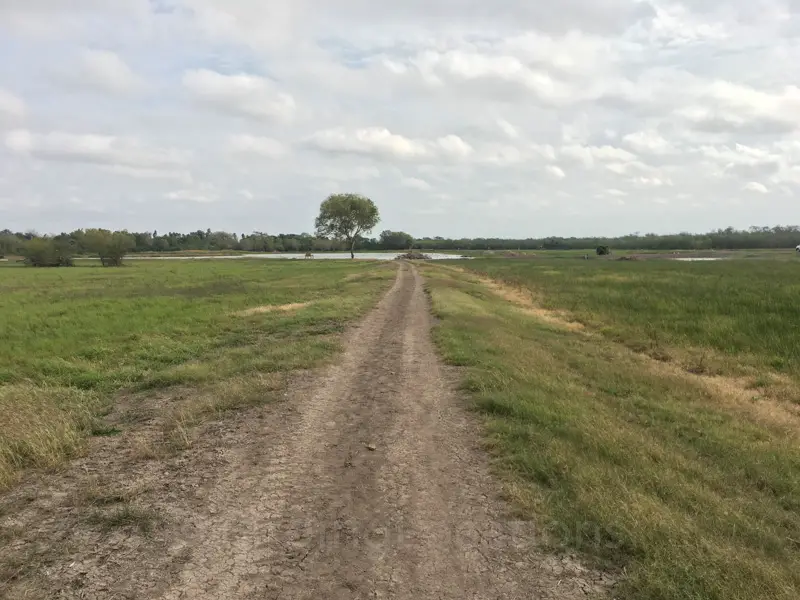
The lakes are also where you’ll get your open grassland. It’s a good spot for Tropical Kingbird (ID by call to separate from Couch’s Kingbird), Great Kiskadee, American Kestrel, and Loggerhead Shrike.
Once at the water watch for Mottled Duck, sandpipers and waders, and whatever else is hanging around. The much smaller, skinnier bodies of water on the right (south) are good for Green Kingfisher. They’ll often perch motionless in dense vegetation right at the water edge, occasionally giving their clicking call.
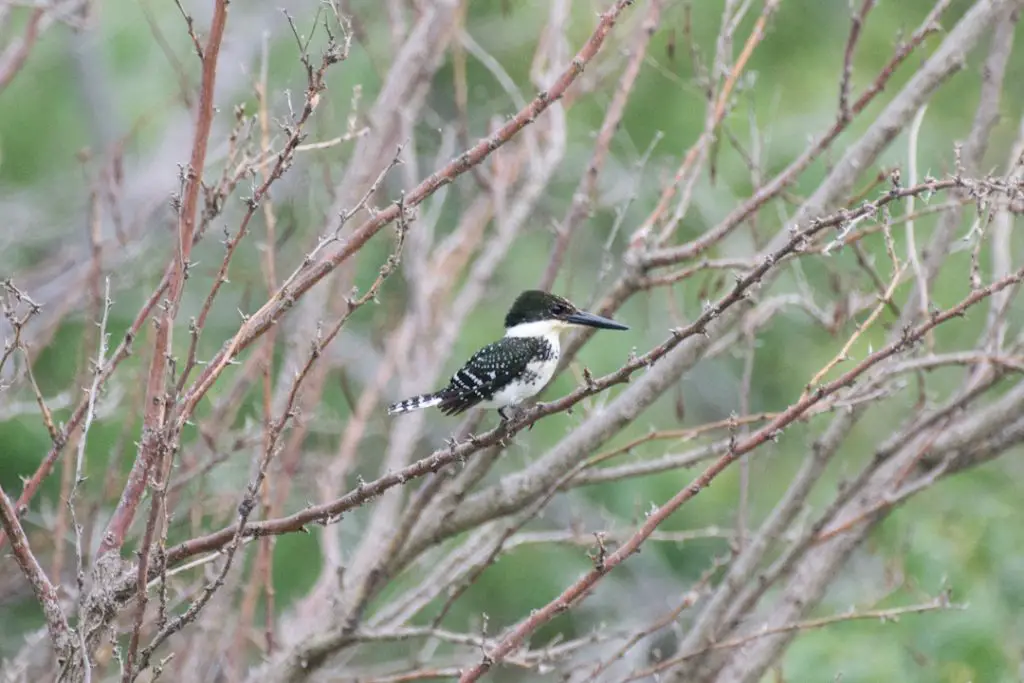
As you walk around to the back side of the lakes you’re more likely to see a Ringed Kingfisher with their loud, machine gun rattle call. Depending on water levels, some rear lakes can be great for waders and shorebirds feeding along the shallow, muddy waters.
The open spaces above the lakes can also be great for soaring raptors. Harris’s Hawk and Osprey are common. White-tailed Kite and falcon species can also be seen here.
Other Areas of the Refuge
Cattail Lakes
The water here is seasonal and dries up often, even during winter. Check with refuge staff about current water levels before hiking all the way out there.
Wildlife Drive
This paved 7 miles road through the refuge is used for the historic tours of the refuge, where a staff will drive a tram with visitors to points of interest like the old cemetary.

In August 2019 the refuge began testing a program for bicyclists to obtain a permit at the front desk and bike this 7 mile loop. The refuge website doesn’t say if this program is stil ongoing.
Contact refuge staff for further information: (956)784-7500
Birding other South Texas Hotspots?
Check out the Texas Hotspot Map for more free guides like this one.
